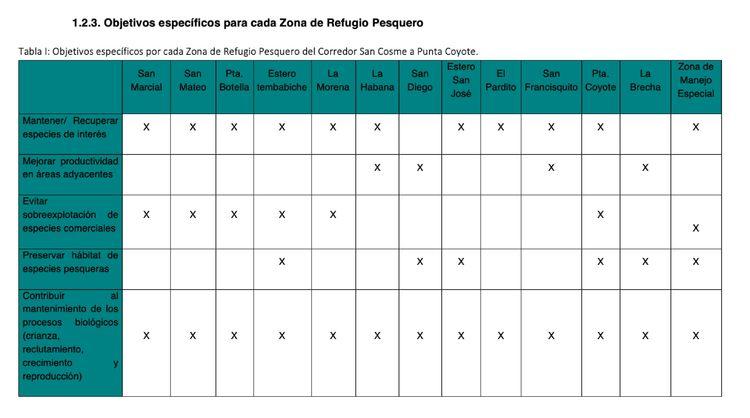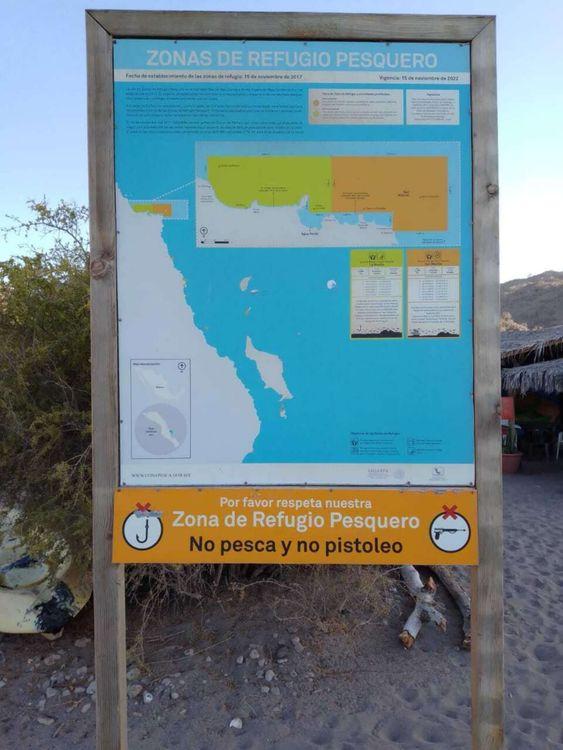The San Cosme — Punta Coyote corridor, one of the pioneering Fishing Refuge Zones (ZRP) in Mexico, needs eyes on the sea 24 hours a day. The project, started by coastal fishermen from 13 communities on the eastern coast of Baja California Sur, seeks to protect species while ensuring fishing, the area's main livelihood.
“The problem is that there has been no stable surveillance. There are no resources or gas for the route. We do it, but we need Conapesca to come, to have more presence in case of illegal fishing within the refuge area or outside it,” explained Joel González, 35, originally from the Agua Verde community.
Joel has been a fisherman in the community for 15 years. Like his colleagues, he believes that illegal fishing within the limits of shelters is a constant problem. “It's daily. It has been daily that they are looting the coast of our corridor,” he said.
González also participated in the 2010 fisheries regulation, which allowed the regularization of workers and managed to ensure that, after a series of requests and studies supported by the Federation of Cooperative Fishing Societies Zona Centro B.S. (Fedecoop) and the civil organization Niparajá Natural History Society, shelters were officially announced in the corridor with a validity of five years.
These groups also consider that the geographical location of the shelters is a factor to consider.
“It's a difficult area to access. I'm talking about the fact that it represents 13 communities, of which there is only access by land to three. The others are by boat [...] Since the sea is an area that is difficult to monitor 24 hours a day, seven days a week, surveillance is undoubtedly a challenge. What we are taking care of may collapse overnight,” said Salvador Rodríguez Van Dyck, coordinator of Strengthening Fishing Organizations and Communities in Niparajá.

Source: Table of the Justification Study of the Network of Fishing Shelters from the San
Cosme Corridor to Punta Coyote, Baja California Sur, presented in May 2017.
A shelter is a bank
As an Agua Verde fisherman, Joel believes that fishing shelters are like banks, “you invest in it and in the future you get something out”.
The problem is that during 2019 and 2020, Conapesca did not grant any subsidies for the 36 shelters (polygons) that exist in Mexico. According to research from the Fishing Data platform prepared by Causa Natura, during the period 2013-2018, only seven fishing shelter networks received subsidies: the San Cosme—Punta Coyote corridor, Natividad Island and the Gulf of Ulloa in Baja California Sur; the Bays of Altata and Jitzámuri—Agiabampo and the Teacapán Lagoon System in Sinaloa; and Banco Chinchorro—Punta Herrero in Quintana Roo.
Of these, only San Cosme - Punta Coyote, Gulf of Ulloa and Isla Natividad have received resources to promote inspection and surveillance.
Faced with a lack of resources, fishermen in the area and Fedecoop began to implement community inspection brigades backed by Niparajá. Salvador Rodríguez Van Dyck confirmed that the organization has managed part of the resources to invest in fuel and monitoring actions.
“There are good results, but even so, the geography in which the areas are located is very far from the points where the surveillance is located. So when (the inspectors) arrive in the area there has already been a coup. It is a challenge that we are facing, the same communities have taken on the task of taking care of their areas,” José de Jesús Flores Higuera, president of Fedecoop, explained in an interview.
The communities also made brochures to hand out to tourists and signs to be placed on the beach where they indicate it is a refuge area. Even so, fishermen insist that Conapesca must improve its work.
For this report, Rear Admiral Vicente Almaráz Flores, in charge of the General Directorate of Inspection and Surveillance, was contacted, but so far no response has been obtained.
For its part, the Department for the Development of Aquaculture Standards of Conapesca responded that it is working “on training courses on fishing and aquaculture regulations for the training of Federal Fisheries Officers (OPF) with the Secretariat of the Navy, which is in the process of taking on the tasks of inspection and surveillance of fisheries and aquaculture”.

Photo: Joel González, fisherman from the Agua Verde community.
Talk about results
The San Cosme — Punta Coyote Fishing Refuge Zones, as well as those of Espíritu Santo Bay in Quintana Roo, gained a second validity in 2017.
“The positive trends in the sizes, abundance and biomass of commercial species within ZRP suggest that investing more time could lead to a greater recovery,” said the Justification Study presented that year. This study was carried out in collaboration with the fishing communities, the Federation and Niparajá.
There are currently 12 polygons in the corridor where species such as the huachinango, the cardinal, the cochito and the yellow snapper are protected.
“The process (of applying for shelters) has changed over the years. In 2009, when the first request was made, there were no steps to follow, a list of requirements. The best information that was available was provided,” explained Salvador Rodríguez Van Dyck, who also adds that time is a factor to consider in fishing shelters to continue evaluating their achievements and benefits but also to consider further improvement actions.
“Shelters are an important part. A new, flexible tool that has helped the fisherman to participate, but we feel that we need a larger framework, they must be an integral part of something bigger, ” he added.
[This report is the second in a series about fishing shelters. Find the previous one here: Cooperatives are betting on fishing shelters despite the onslaught of the pandemic]



Comentarios (0)